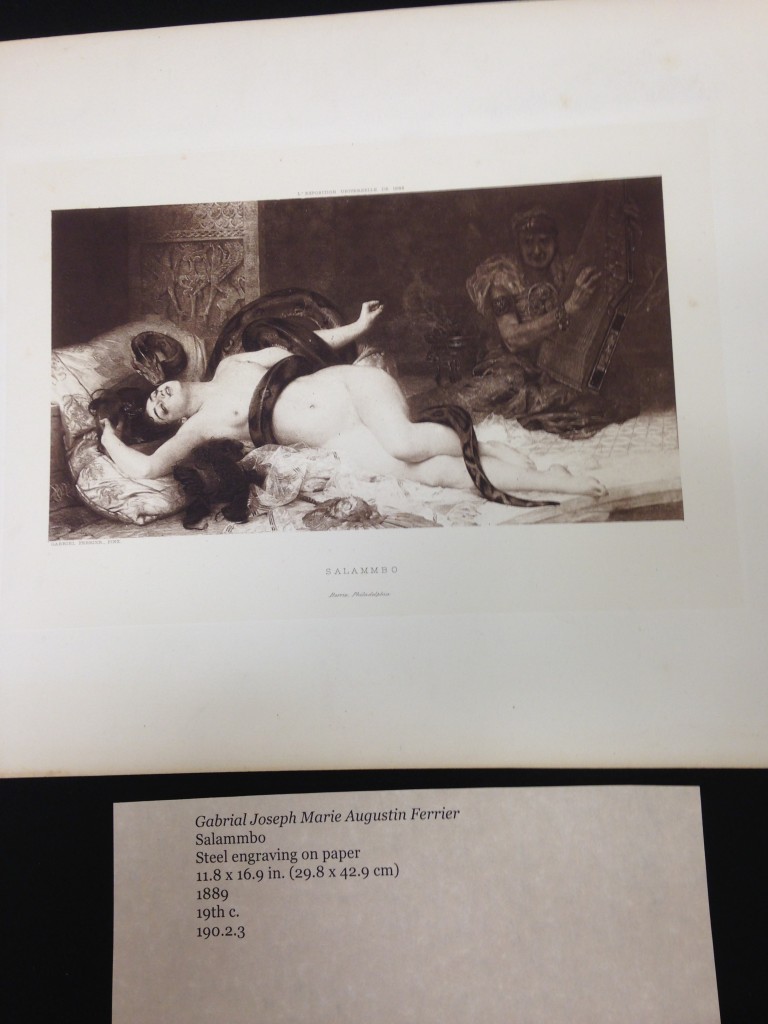In his book, The History of Sexuality, Michel Foucault states in his introduction that “if sex is repressed, that is, condemned to prohibition, nonexistence, and silence, then the mere face that one is speaking about it has the appearance of deliberate transgression. A person who holds forth in such language places himself to a certain extent outside the reach of power; he upsets established law; he somehow anticipates the coming freedom” (Foucault 6). Foucault’s lens of sexuality could be corresponded with the untamable power men associated with the femme fatale, during the nineteenth century. The femme fatale can be examined as the person upholding sexual language that is “outside the reach of power; [she] upsets established law,” which the men around her dictate (6). Her ability to control the men around her with her sexuality causes a male panic that results in sexual repression over her female body. Her sexual freedom foreshadows a future of egalitarianism where the male is not the superior gender, but equal or inferior in sexuality. Salammbo, the woman engaged in sexual ecstasy in Salammbo by Gabrial Joseph Marie Augustin Ferrier, upsets the balance of sexual power beyond her identification with the femme fatale. In this drawing she controls every aspect of her sexuality through her gaze, her body language, her relationship with her snake, and most importantly through her status in society.
Salammbo is the political leader and representative of her tribe. Her ability to relate with a snake, an extremely, mysterious and solitary animal exoticizes her sexuality. The snake is a symbol of the tribe’s power, and her intimate relationship with it through sexual pleasure emphasizes her dominance over the tribe and the viewer. She is completely engaged in her own sexual enjoyment and posses her sexuality entirely. Salammbo exemplifies the ultimate femme fatale, a women who is truly independent and does not need male attention or support. The priest in the background exists in relation to her needs. He works for her, and she uses him for her political and sexual needs. Her position as a female leader, with immense sexual control expresses one of the the core pieces to Foucault’s argument. Salammbo exists unrestrained by law and sexual repression because she does not allow it bar her expression. She is entirely free and thus rises above “the regime of power-knowledge-pleasure that sustains the discourse on human sexuality” (11). Salammbo’s identity is exposed and vulnerable because it is truthful and guiltless. She is not harboring her identity by presenting a facade of power and strength. On the contrary, she empowers herself by embracing her sexuality and revealing her identity truthfully with confidence.

I really like the way you connected Ferrier’s painting to Foucault’s theory of the discourse of sexuality. Foucault also writes a lot about how even non-conventional sexual roles seem to perpetuate the discrimination against the Other. Do you really think that Salammbo’s portrayal as the Femme Fatale is a liberation? Could it not also be seen as just another simplified polarization of the woman as either the saint or the whore? If it is a perpetuation of this stigma, how does Salammbo overcome this? Can she?
Posting this for Georgia Christman:
While I believe that this painting could be a reclamation of female sexuality, I’m curious where the viewer and painter fit into that narrative. The fact that a man painted this women in complete sexual ecstasy seems to complicate the idea that this woman is free. If she is the creation of a man’s fantasy, how much agency is she given in her sexuality? And if the viewer is also male this painting becomes for male pleasure or use. Also I think that her hands are oddly placed if they are trying to convey pleasure, especially sexual pleasure with herself. She is not masturbating, or touching herself at all. Her arms are spread wide, helplessly entangled with the snake. While her sexuality is definitely subversive of the mainstream silence around sex, I’m not sure whether she is sexually free.
What a perfect quote to exemplify what is happening with Ferrier’s painting! I liked how you identified the female as eventually holding an equal or even higher level of sexuality than men. But in some ways I question if Salammbo, as much as it defies the typical Victorian representation of a woman, if the subject of the painting herself is reaching liberation or is she instead just becoming an object of the male gaze, especially with the looming presence of the man behind her in the painting. Also, I read the snake differently as being more a symbol of temptation, perhaps warning the male and female viewers of her danger…